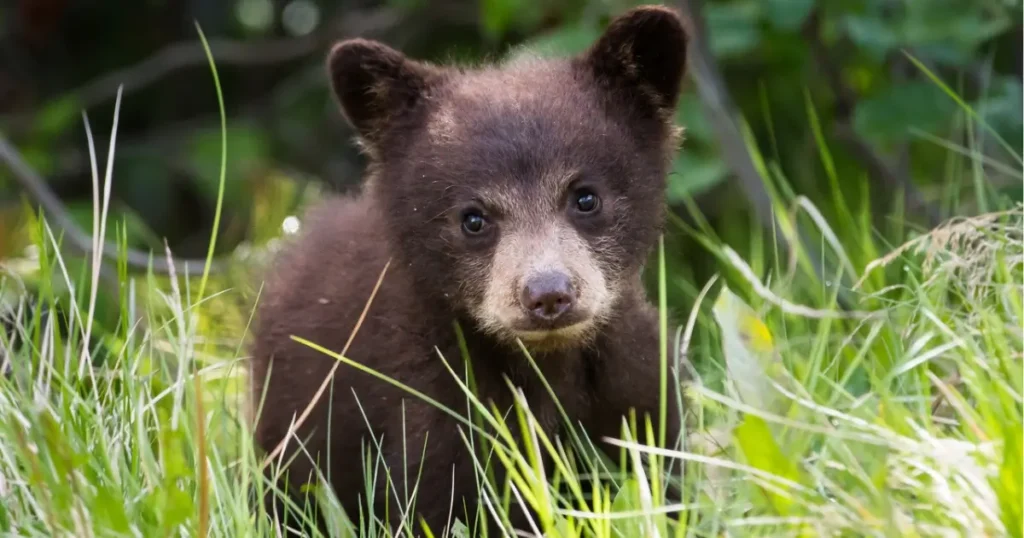
Photo by Jillian Cooper / Getty Images
The outrage over a group of people pulling black bear cubs from a tree to take selfies in North Carolina is highlighting the need for more education on the impacts of this cultural phenomenon.
The incident, covered extensively in North American media, began when a group of people in an apartment complex saw and began touching, grabbing at, and taking selfies (photos in which the photographer places themselves in the foreground, often with a cell phone camera) with the bear cubs who were in trees at the edge of the property. According to NPR, the individual who recorded the incident first asked the group to stop before beginning to record. In the video, one of the bears cries out while being held, is dropped, and runs away.
One of the two cubs was located and taken to rehabilitators at the North Carolina Wildlife Resources Commission. The other was not yet found at the time of this writing, and no charges were levied.
The desire to connect with wildlife and other aspects of the environment is natural and warranted; but interfering with animals by feeding, touching, or causing any change in their natural behaviours is harassment. The way animals react to this is individual, based on their experience, needs, and the environment. But it typically isn’t positive – and can lead to significant consequences for the animals themselves or the people getting nearer to them.
If you see wildlife and want to take a selfie, here’s a few things to consider first to make sure you and the animals stay safe:
1 Keep your distance. Avoid getting closer to an animal for a photo, and instead do your best to get a picture from your current location. Imagine how you would feel if you were on a walk and a large, imposing person started approaching you – while we may not always remember, to most animals, we’re predators.
2 Never feed wildlife. Providing food for an animal teaches them to expect food from people. This is the same foundation of how we teach frightened dogs to trust people – we slowly and carefully offer them food, building up the trust, until they approach us. In wildlife, this can lead to close encounters or bites that are labelled as “attacks” and lead to the animals being killed.
3 Know the local laws and respect them. In many popular tourist areas there are clear and direct rules about interacting with wildlife. Around Banff National Park, for example, no-stopping zones are created due to people stopping vehicles dangerously on the side of the road to try and get a photo. In other areas, parts of a natural area may be off limits due to sensitive ecosystems, wildlife breeding periods, and so on.
4 Get involved safely. If you want to create opportunities for seeing wildlife or getting their photos, consider working with ethical photographers and tour operators (they won’t feed, they won’t put animals at risk for a photo, and they’ll teach you along the way) as a vacation destination.
If you see people inappropriately approaching wildlife or feeding, please contact the relevant agencies in your area. In case of an emergency contact 9-1-1 or your local emergency services.
Where to report
British Columbia: Report All Poachers and Polluters, 1-877-952-7277 (online at https://forms.gov.bc.ca/environment/rapp/)
Alberta: Report A Poacher, 1-800-642-3800 (online at https://www.alberta.ca/fish-wildlife-area-office-contacts)
Saskatchewan: Turn in Poachers and Polluters, 1-800-667-7561 (online at https://www.saskatchewan.ca/residents/parks-culture-heritage-and-sport/hunting-trapping-and-angling/turn-in-poachers-program/tipp-information-system)
Manitoba: Turn in Poachers, 1-800-782-0076
Ontario: TIPS-MNR, 1-877-TIPS-MNR
Quebec: SOS Poaching, webform: https://www.quebec.ca/en/agriculture-environment-and-natural-resources/wildlife/wildlife-protection/sos-poaching-wildlife-emergency
New Brunswick: Natural Resources, find your regional office at https://www2.gnb.ca/content/gnb/en/departments/erd/fish-and-wildlife/content/Regions.html
Nova Scotia: Report a Poacher, 1-800-565-2224 (online at https://novascotia.ca/natr/enforcement/reportapoacher.asp)
Prince Edward Island: Report a Violation, 902-368-4884 (online at https://www.princeedwardisland.ca/en/service/report-a-violation-to-a-conservation-officer)
Newfoundland and Labrador: Resource Enforcement Division, 1-877-820-0999 (online at https://www.stoppoaching.ca/find-your-nearest-detachment)
Yukon: Turn in poachers and polluters, 1-800-661-0525 (online at https://yukon.ca/en/turn-poachers-and-polluters)
Northwest Territories: Compliance, enforcement, and inspections, find your regional office at https://www.gov.nt.ca/ecc/en/report-something
Nunvaut: Data pending
